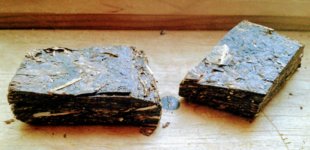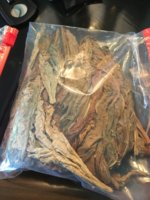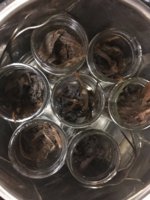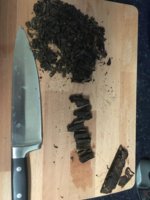@deluxestogie - I'm new here but I've been a lurker for some tim. I'm both a pipe smoker and a cigar man - definitely right at home here with all of you tobacco enthusiasts. I know this thread is old, but I wanted to thank you personally for posting it.
I've used this method of steaming in a colander several times over the past two years and I've had some surprisingly good results. The first time I tried it, I used red Virginia. I was trying to replicate the red cavendish that Cornell & Diehl makes and adds to their famous Kajun Kake. I steamed some of the ribbon cut reds for 8 hours, and what I got was a very enjoyable new blending component. The steaming process turned the red Virginia to a mahogany brown color, and it is exceptionally smooth. Also, I dried the leaf before storing it in a jar, but did not press it.
The second time I tried it with some ready-rubbed style cut dark Burley that came from Cornell & Diehl. It's a non-cased Burley that's labeled for blending. I found it to be exceptionally harsh, even as a fan of strong tobacco.
I took about 2oz (approximate dry weight) out of the steam after 4 hours to have some brown Cavendish and set it aside; it's color didn't change a whole lot from its original dark brown, just a little darker. The remaining 4oz, after 8 hours in the steam bath, turned
almost black (from its original dark brown) and is the closest thing I've come to making unsweetened black Cavendish.
This time around, after air-drying it for a few hours near my wood stove, I pressed it into a cake using a rudimentary homemade press which I made out of a sturdy hardwood box (about the size of a cigar box) and four C-clamps. When pressing, I line it with parchment paper so to keep the juices from seeping into the wood and the wood from affecting the final product.
A third time I experimented with something new; re-pressing a plug of G.L. Pease Temple Bar - a plug consisting of Virginias, Katerini, and a small amount of Perique. This plug was very loose, and the smoke was harsh. A previous tin of the same plug I'd bought a year earlier was much better; it was firmer, the color was darker, and the flavors were excellent. So I repeated my process for the aforementioned dark Burley cavendish.
The only thing I did differently this time around was leaving it in my press for a full seven days. Because it was still fairly damp after drying and I was doing this during a Cape Cod summer, I had no issue with it drying out, and no mold. The end result was an
excellent plug that was not only wonderfully dense, but mouth-wateringly flavorful; all of the harshness it had beforehand was gone entirely, and the process didn't ruin the strength or muddy the flavors either. Aside from the ugly stems, I ended up with some great looking plugs:

Anyways, sorry if this was a bit long-winded, but I can't thank you enough for posting this tutorial. I'm looking forward to what other great batches I'll cook up in the future.
Best Regards from Cape Cod, Massachusetts!






